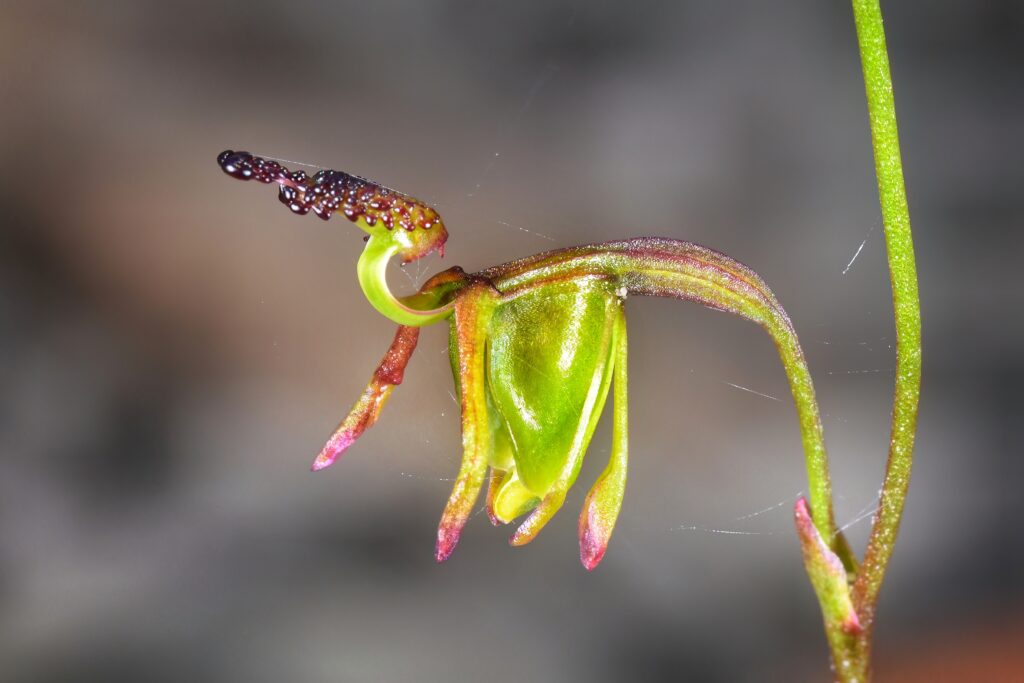The plant world has a wide range of different ways to encourage or deceive animals into pollinating their flowers. One of the most common ways is for flowers to produce nectar, that sweet liquid gold which brings in a menagerie of birds, mammals, insects and even some frogs and reptiles, all searching their next sugar fix while unknowingly pollinating the flower. Flowers will often use a combination of other pollination strategies, such as wind, water, scent, colour, mimicry or entrapment. One type of plant, the Flying Duck Orchid, uses the latter four strategies in an ingenious way.

Flying Duck Orchids of the genus Caleana are an incredible orchid, consisting of over a dozen species in Australia and New Zealand. Growing up to 50cm tall, their small flower at the top has a remarkable resemblance to a duck in flight, complete with open wings, duck head and outstretched neck, but this is not its most amazing feature. Flying Duck Orchids are sneaky and deceptive.
This orchid has evolved its uniquely shaped flower to attract a very specific pollinator, a type of wasp called a Sawfly. Like something out of a seductive thriller movie, the Flying Duck Orchid uses sexual deception to attract male Sawflies to the flower. The flower releases a chemical which is very similar to a female Sawfly’s sex-pheromone, and the shape of the flower’s labellum, in a way, looks like the female wasp. When a male gets a whiff of an apparent ‘female’ nearby it zeroes in on the Duck Orchid flower and begins to try to mate with the flower’s labellum, a process called pseudocopulation. During the male’s rigorous movements, the column (or stalk) holding up the labellum is triggered to rapidly move downwards into the sexual parts of the flower where the wasp is briefly trapped and will pollinate the flower if it has been tricked into copulating with other nearby Duck Orchids.

Males, when they’re eventually clear-headed and mate with a female of their actual species, will often produce sperm that has a tendency to result in mostly male offspring than females. Because there are more males in a population, there is more chance of frustrated males visiting the Duck Orchid flowers and pollinating them. Good for the orchid, not so nice for the wasp!
Unfortunately, some species of Flying Duck Orchids are in decline and a number are listed as threatened in Australia. Several factors are causing this decline such as poor fire management, browsing by feral rabbits and deer, the reduction of beneficial soil fungi and reduction of Sawfly pollinators in the environment.
Keep an eye out for these unique little orchids when you’re on your next adventure.
